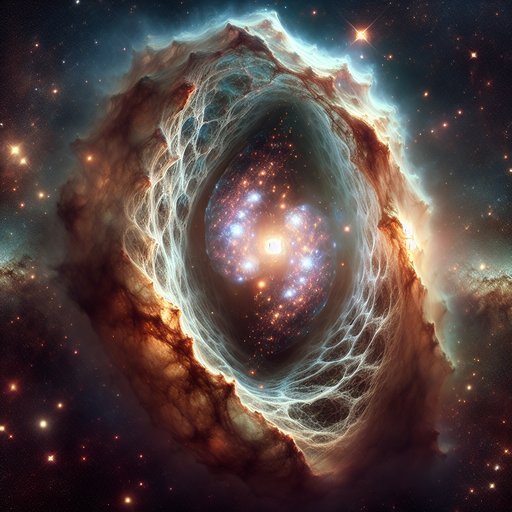
In an astonishing leap toward understanding the cosmos, NASA's Chandra X-ray space telescope has revealed a colossal galaxy cluster wrapped within a massive cocoon nearly 20 million light-years wide [4]. This discovery offers a profound insight into cosmic structures and the immense gravitational forces at play, bringing us closer to unraveling the intricacies of the universe.
The revelation of this enormous galaxy cluster came from the precise observations of NASA's Chandra X-ray telescope. This significant find marks one of the largest coherent structures known in the universe, demonstrating the vast scale of cosmic formations. The cluster's detection relies on the X-ray emissions from the hot gases trapped within the gravitational pull of numerous galaxies, making it a stellar subject for further study [1]. The discovery not only illuminates the sheer size of cosmic structures but also emphasizes the role of X-ray astronomy in mapping the universe.
The surrounding cocoon provides a unique observational perspective, helping astronomers analyze the dynamics of galaxy formation and interaction in the cluster. Such data is pivotal in understanding the evolution of galaxies and the role played by dark matter and gravitational dynamics [1]. In parallel, new technological advancements continue to aid such discoveries. The forthcoming Nancy Grace Roman Space Telescope, leveraging Einstein's century-old gravitational lensing concept, promises to deepen our understanding of dark matter by capturing intricate details of similar cosmic phenomena [3, 6].
These efforts underline a growing synergy between ground-based observatories and space telescopes, facilitating unprecedented insight into the cosmos. The significance of this discovery extends beyond mere size. It contributes to a broader understanding of the cosmic web's architecture, mapping the universe on an unprecedented scale. Insights derived from this galaxy cluster might reveal how such colossal structures interact and evolve, setting the stage for future explorations aimed at demystifying the vast fabric of space.
The continued study of these phenomena holds the promise of answering fundamental questions about the universe, marking yet another step in humanity’s quest to comprehend the cosmos in its entirety [1].
























